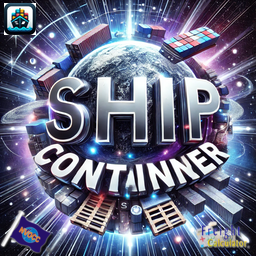
FCL Shipping Rates Worldwide
Efficient Container Shipping Services with Freight-Calculator.Com

Efficient Container Shipping Services with Freight-Calculator.Com
FCL-Shipping, or Full Container Load shipping, is a method of shipping where the entire container is reserved for one shipment. Businesses that require the movement of large quantities of goods can opt for FCL, ensuring that their cargo is shipped efficiently, securely, and cost-effectively. With Freight-Calculator.Com, you can get instant quotes for FCL-Shipping, streamlining your logistics operations.
FCL-Shipping offers numerous advantages. First, it provides the shipper with full control over the container, ensuring that no other goods are combined with their cargo. This minimizes the risk of damage and maximizes security. The cost per cubic meter unit via is much lower for larger shipments when using FCL, making it an attractive option for businesses with high-volume shipping needs.

Freight-Calculator.Com simplifies the process of container shipping. Whether you're shipping a 20-foot or 40-foot container, our platform allows you to get instant shipping quotes for both FCL and LCL. With our calculator, you can ship containers to destinations worldwide, ensuring your goods reach their destination efficiently. Our tools help you optimize your logistics and save costs by offering clear, reliable shipping quotes.
When shipping sea containers, it is important to understand the logistics involved. The sea container shipping process often involves several steps, including loading at the point of origin, shipping across ocean routes, and unloading at the destination. Using our Container Shipping Calculator, businesses can get detailed quotes, considering factors such as route, container size, and shipping schedule.
For FCL-Shipping, the shipper is responsible for loading and stowing the container. This practice, known as Load-And-Stowe, ensures that the shipper has full control over how goods are loaded and secured within the container. At Freight-Calculator.Com, we provide guidelines and tools to help shippers ensure that their cargo is packed efficiently, minimizing risk and optimizing space.
Freight-Calculator.Com offers a one-stop solution for all your container shipping needs. With our FCL-Shipping service, you can calculate costs for international container transport in real time. Whether you're shipping goods across the ocean or using multimodal transport, our platform ensures that you have the right tools to manage your container shipping efficiently.
Our FCL-Shipping Calculator provides businesses with instant pricing information, allowing for better budgeting and planning. With easy-to-use tools and detailed cost breakdowns, Freight-Calculator.Com helps shippers make informed decisions, ensuring that every container is shipped on time and within budget.